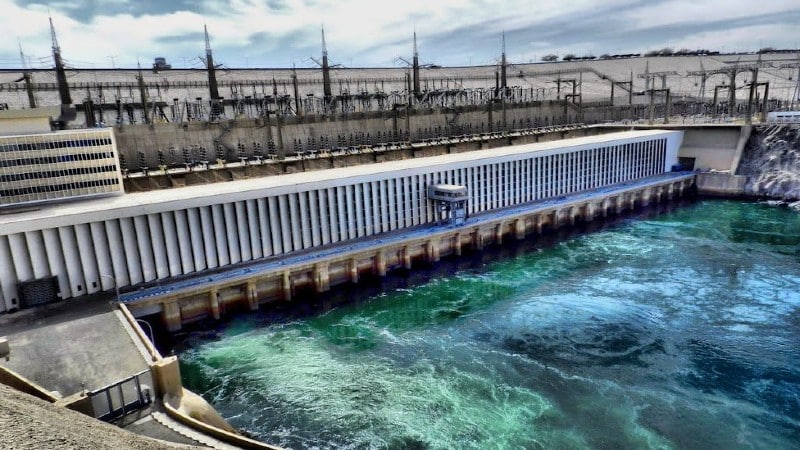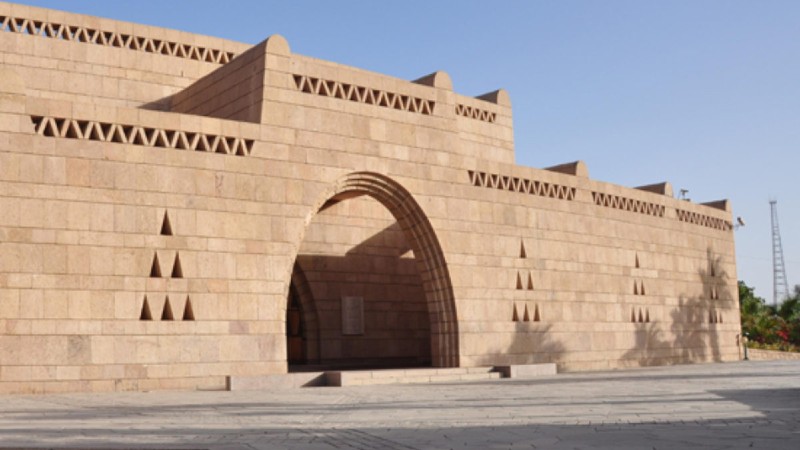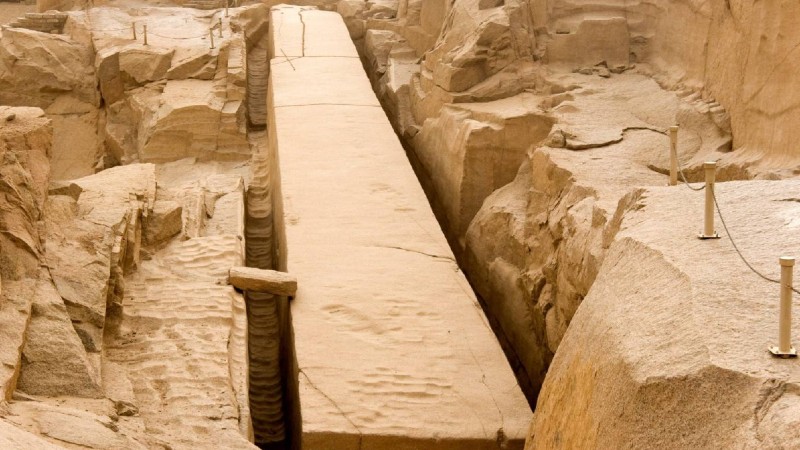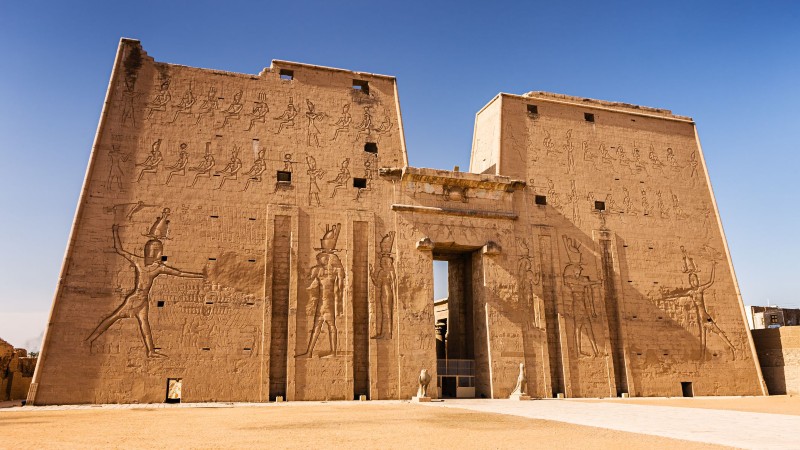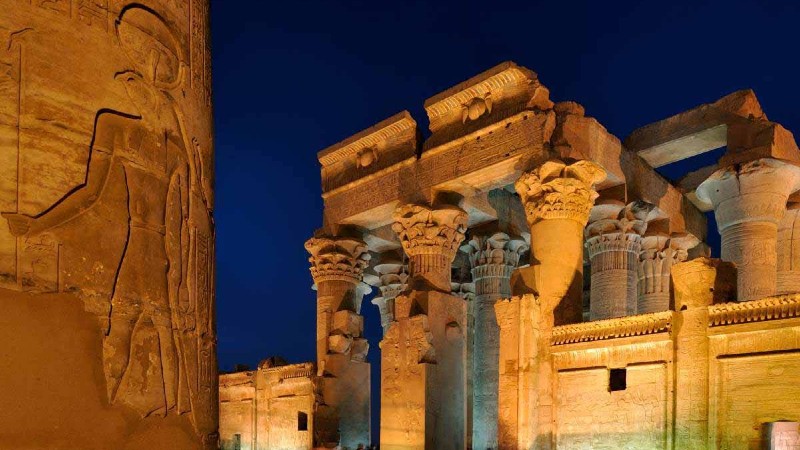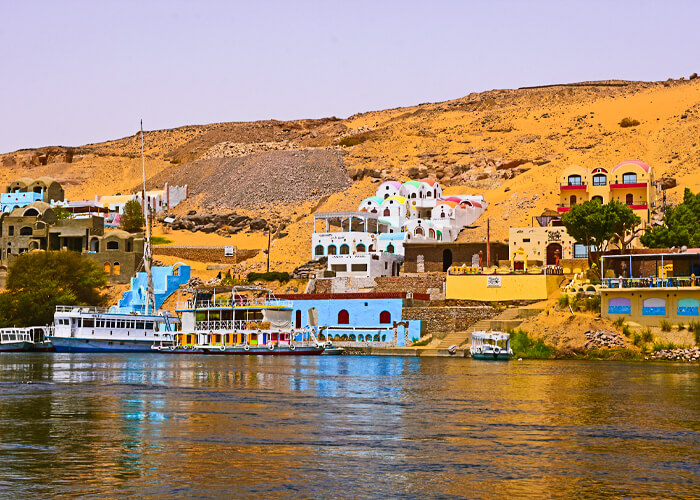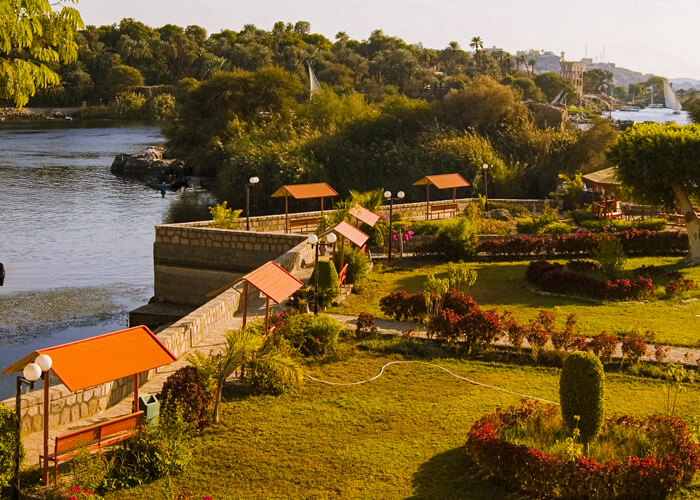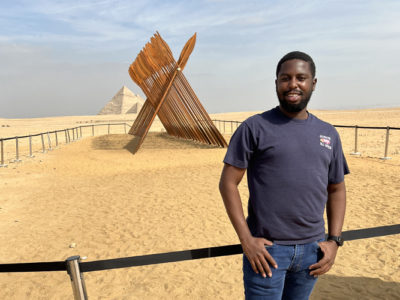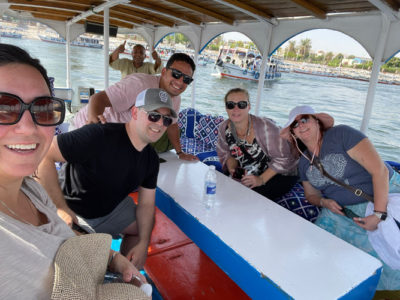A trip to the main attractions of Ancient Egypt is not complete without a visit to Aswan Attractions. The city is located in the far south of Egypt, 850 km from Cairo, on the banks of the Nile River; Aswan is the last “big” city before the Sudanese border, so the city has become a staging point to visit many attractions in the region, especially Abu Simbel. With 300,000 inhabitants, the city is the area’s commercial hub and has a train station and airport. However, walking through the streets of Aswan, you realize that it looks like a country town. The buildings are not significant, the stores are simple, and there is little vehicle traffic.
Discover Aswan’s hidden treasures by traveling to Egypt. Experience history comes to life via the various intriguing sights in this enchanting city, from the breathtaking structures of Abu Simbel to the lush surroundings of Philae Temple. Discover Aswan’s culture and beauty in our All Inclusive Egypt Vacation Packages.
Check top tourist sights of Aswan
Aswan High Dam Egypt
Today we will talk about one of the most important semi-engineered constructions of the twentieth century. This is the Aswan...
Read moreAbu Simbel Temple
The Temple of Abu Simbel is one of the most well-known and significant structures in Egyptian history and culture, particularly...
Read morePhilae Temple
Philae's Temple is a temple dedicated to the goddess Philae. The Philae Temple, which is located three miles from the...
Read moreNubian Museum
The Nubian Museum, which opened its doors in 1997 after 10 years of hard effort, is now widely regarded as...
Read moreUnfinished Obelisk
When seeing the remains of colossal structures strewn across Egypt, it is uncommon to take the time to pause and...
Read moreTemple of Edfu
Edfu is a city of approximately 60000 inhabitants, located on the west bank of the Nile, more specifically between the...
Read moreTemple of Kom Ombo
The Kom Ombo Temple is situated in the namesake hamlet in Upper Egypt, in the country's southernmost region, and is...
Read moreTombs of the Nobles Aswan
Today we will talk about one of the most important semi-engineered constructions of the twentieth century. This is the Aswan...
Read moreQasr Ibrim
Today we will talk about one of the most important semi-engineered constructions of the twentieth century. This is the Aswan...
Read moreTemple of Amada
Today we will talk about one of the most important semi-engineered constructions of the twentieth century. This is the Aswan...
Read moreTemple of Wadi El Sebou
Wadi El Sebou Temple is situated around 150 kilometers south of the Aswan Dam on the western bank of the...
Read moreKalabsha Temple
Kalabsha Temple is an absolute must-see in Aswan, which has long been considered the most picturesque city on the Nile...
Read moreNubian Villages
Aswan, in the southernmost part of Egypt, is a must-see place. On the western side of the Nile, Aswan is...
Read moreLake Nasser
Lake Nasser is one of the largest artificial lakes in the world, and it was made to look like a...
Read moreKitchener’s Island
Lord Kitchener's Island may be between the Cataract Islands and the city of Aswan, which is in the middle of...
Read moreElephantine Island
The ancient Egyptians used granite from Elephantine Island to build many of their temples. It was also a major place...
Read moreAswan has many things to see and do
This text has a lot of information about Aswan, Egypt, an important city because it is where the Nile River starts its journey through Egypt. Aswan used to be called Soun, which meant “market” because the city was the center of trade in the area. Stones, ivory, incense, and spices are just some of the unusual things that came from Africa and helped make this area a central commercial hub in the southern part of the continent.
Where is Aswan?
Aswan is one of the most important cities in southern Egypt. It is 982 kilometers from Cairo and 260 kilometers from Luxor. In the past, Aswan was where Africa and Egypt met, and it stood on the banks of the Nile River. During the winter, many people go to Aswan to take advantage of the city’s comfortable temperatures and lots of sunshine. Aswan used to be called (Suon), which means “markets” in English. It is considered one of the oldest places to do business in Egypt and the world. Aswan’s main draw is the natural scenery along the Nile River, especially the cascade in the middle of the river.
Aswan Climate
It’s easy to think that Aswan’s residents live in the worst desert environment because the city is in the south, surrounded by desert, and the Nile valley is tiny. As a result, you’ll notice that things slow down in the middle of the day and then pick back up as the sun goes down. The following are some rules that can be followed:
In the middle of the day in the summer, temperatures average around 40 °C, but they are still very comfortable in the winter when they hover around 22 °C. This has made Aswan a popular winter destination since the turn of the century.
What to do and what to see in Aswan?
Aswan islands
So far, everything we’ve seen is on the mainland, on the east side of the Nile. But if you’re brave enough to hire a felucca and cross this big river as it flows through Aswan, you’ll find its islands. They are places where you can get fresh air and feel like you’re somewhere new.
- Elephantine Island
Elephantine Island is the largest and most important of all of them, and it is also the one that brings in the most tourists. It is the best example of this civilization, which was on the verge of dying out before the Aswan High Dam was built. This was partly because large numbers of Nubian people used to live in small villages there. As you walk through the narrow streets between the brightly colored adobe buildings, it’s easy to see what makes this town unique (orange, yellow, blue, etc.). There are many places to stay, such as guesthouses, which could be a great way to learn more about this culture. But several modern hotels with amenities like those at a resort have also been built.
- Kitchener’s Island
This Kitchener island is named after a British consul who played a big part in making the vast botanical park that people who like exotic plants, flowers, and gardening, in general, can now visit. A pedestrian promenade is also a top place for ornithological tourists because it is an excellent place to see migrating birds.
- Sehel Island
The city center of Aswan is about 4 kilometers south of the island. The island is far from the city, but getting there on a felucca is easy and fun. There is another beautiful Nubian town and an exciting rock with hieroglyphics from the time of the Ptolemies. It is called the Hunger Stela, and its 32 columns tell the story of how Pharaoh Djoser was worried about a famine caused by a low Nile flood during the III Dynasty of the Old Kingdom, which was about 2,500 years before that inscription.
Aswan Museums
Aswan has several museums that show Nubian culture and other parts of the city’s history and culture. We try to get people to visit the Aswan Museum, the Nubian Museum, and the Nile Museum.
- Nubian Museum
This is the best place to learn about Nubian culture, which is very important in Aswan. It is a beautiful, roomy place next to the Fatimid cemetery where historical items and copies of typical Nubian settings are shown. Finds from the old Kingdom of Kush, found at archaeological sites, were some of the most valuable. The Nubian museum was built because of a deal with Unesco to remember what was lost when Lake Nasser was made.
- Nile Museum
It is 6 kilometers south of Aswan, near the Low Dam and on the city’s outskirts. It is a three-story museum where the Nile River is the main character. It shows everything from the plants and animals that live near the river to how different civilizations used its water for farming to the irrigation systems used by people who work in the river’s channel. The museum helps build bridges between the ten countries this river flows through because cultural issues affect not only Egypt but all of them.
On the other bank of Aswan Nile
Even though the modern city of Aswan is not on the west bank of the Nile, it still has important tourist sites. You’ll find them near one of the most exciting things about this place: white dunes with trees that grew there on their own, primarily palm and sycamore trees. Here are the most important things to see and do:
- Aga Khan Mausoleum
It is one of the most popular tourist spots because of its beautiful architecture, which was directly influenced by the Fatimid tombs in the cemetery on the other side. But this tomb honors Sultan Mahommed Shah Aga Khan III, the 48th Imam of the Shiite Ismaili Muslims of modern-day Pakistan. It was built in the middle of the 20th century and is much more recent. Begum Aga Khan, who used to be Miss France, pushed for and took care of his tomb. It was built here because he liked to spend the winters in Aswan.
- Saint Simeon Monastery in Aswan
The best example of Christianity spreading through Aswan is the Monastery of Saint Simeon, also called Deir Amba Saam. It is a little over a kilometer from the coast and has a high level of protection that is hard to believe. It was built in the 7th century, rebuilt in later centuries, and then left empty in the 13th century. It is made of stone and an adobe; some wall parts are 9 meters long. One of the few wall art pieces is a picture of Christ in the apse. A common way to get around is riding a dromedary across the dunes. You can find the much worse off Santa Hedra monastery on the way to this Christian monastery.
- Tombs of Nobles
It is one of the most impressive buildings from the time of the pharaohs in Aswan, and it is a tomb for a significant person from that culture. They are on the west side of the Nile River, where the sun goes down. They are old Sunt nobles, most of whom come from the Old and Middle Kingdoms. Sarenput II probably built the one with the best-preserved miniature Osirian figurines and wall paintings during the XII Dynasty.
- Philae temple
The Temple of Philae is on an island with the same name as the city, about 8 kilometers south of the town. Even though it was built during the Greco-Roman era, all scholars agree that it is one of the most beautiful pieces of ancient Egyptian architecture and may be the last major one. So, we give it the space it needs by putting it on a separate page.
- Kalabsha Temple
The Kalasbsha Temple is about 20 kilometers (about 12 miles) south of Aswan. Even though it is not as well preserved as Philae, it is still an interesting example of a Roman-era Egyptian temple. It is mainly dedicated to the local sun god Mandulis (or Merul), but it also has some exciting reliefs carved into the stone blocks. Some of these reliefs show Egyptian gods, and others show rulers who have been turned into gods. With the help of German engineers and archaeologists, one of these temples had to be moved stone by stone to its current location. When the Aswan High Dam was built, the Nile’s water level rose, putting the temple in danger.
- Abu Simbel Temple
This Temple of Abu Simbel is far from Aswan (almost 300 km by road). But since this is the nearest city, the expeditions start here. Many people travel by car, but some go by boat, plane, or both, which is faster and more comfortable. We also have a website for this great Ramses II project, which is essential for tourism, because it is so important.
Even though Aswan isn’t one of Egypt’s most significant cities and is very far from the rest of the big cities, it is one of the best connected to the rest of the country. Check out our Aswan Day Tours to discover the history of amazing Aswan.

We Are Travel Agency
Amon Ra Tours, Egypt’s travel experts, offer private, tailor-made tours, for families, small groups, and retreats. Get immersed in the Egyptian culture and history while receiving new perspectives from locals. When you book with us, you become family.
Our staff holds a plethora of not only historical knowledge, but day-to-day living to make your trip memorable.
WE HELP YOU PLANNING YOUR JOURNEY
| Trust and Safety | Beautiful Places |
| Best Travel Agent | Passionate Travel |
| Best Price Guarantee | Fast Booking |
Frequently Asked Questions.
It is well known that Aswan is a peaceful place with a rich history and beautiful views of the Nile Valley.
The meaning of Aswan was put into several different groups. A city in Egypt that has been there since the time of the Pharaohs and is on the Nile.
People living in the southern part of Awan rarely see alligators in the river. On the other hand, if you go swimming in the Nile, you might get sick from germs or viruses.
Visitors to Egypt must enter with a passport valid for at least (6) months from the date of arrival. Most nationalities can have an entry visa valid for one (1) month from the date of arrival. Some of these countries are Australia, Canada, South Korea, Croatia, the United States, Georgia, Japan, Macedonia, Norway, New Zealand, European Union, Ukraine, the United Kingdom, Russia, Serbia, and most Latin American countries. This visa is acquired at the window before going through customs.
Since your tour guide will be a Spanish-speaking professional, it is not essential. However, it is beneficial to learn some of the most commonly used words and phrases. In case you wish to have contact with the locals and explore popular places, it will be necessary for you to know a few words.
While it is true that Egypt has a wealth of fascinating historical sites, the Nile River is not far behind. Aboard a cruise, you can experience navigating one of the most famous and history-filled rivers while watching the most beautiful sunsets that only Egypt has to offer. This is an experience like no other.
Taking pictures is allowed in most of the places to visit, however, some of these sites charge an additional fee for allowing you to do so. In some museums, it is forbidden to take pictures.
With a relatively low crime rate, especially in places that tourists visit frequently. Egypt is and has been one of the best and safest tourist destinations for decades. With the quality of hospitality of the locals, you will feel at home in Egypt. However, as in any other tourist destination, it is important to take into account and follow the recommendations provided by your travel agency in order to explore and enjoy the country at ease.
Amon Ra Tours is one of the most recognized and professional travel agencies in the tourism industry in Egypt. We offer a wide range of benefits, options, and services to our clients. On every trip, we make sure that your experience is unique, enjoyable and never to be forgotten. To this end, we have programs and itineraries that are competitively priced in the market and fully tailored to the needs and tastes of travelers to create a personal experience like no other. In addition, to fully ensure that your trip is unforgettable and the experience exceeds your expectations, you will have a great customer service team and a professional tour guide to accompany you on your tour. For your comfort, you will enjoy first-class accommodations and much more.
There are a lot of activities that you can do on your trip to Egypt. However, the favorites of travelers are: visit the pyramids, tour the old Cairo visiting the most emblematic places (mosques, streets, markets, etc), sailing aboard a cruise on the Nile River. Visiting and touring other cities in Egypt.
Amon Ra Tours offers several types of packages, among these, are Classic tours, in which you will explore both Cairo and the south of the country aboard a cruise ship. Tours to Egypt in 5 days where you will explore the best of the country. Cruises on the Nile, while you get to know various places.
Combined tours to the Middle East with countries such as the Arab Emirates, Jordan, and Turkey. Different tours to explore various Egyptian cities and special trips organized for Easter and Christmas.

